Excerpts from Jim Conrad's
Naturalist Newsletter
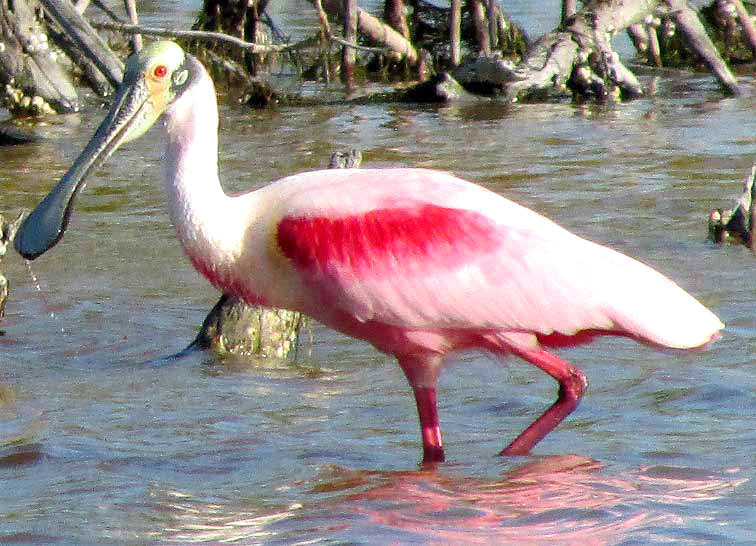
from the December 7, 2014 Newsletter issued from Río Lagartos, on the Yucatan Peninsula's northern coast (~N21.60°, ~W88.16°), Yucatán state, MÉXICO
ROSEATE SPOONBILL
In Ría Lagartos Estuary, flamingos aren't the only large, wading birds who become pink after eating large quantities of small crustaceans who themselves are pink because they feed on algae containing red carotenoid pigments. Another pink bird is shown above.
That's a Roseate Spoonbill, AJAIA AJAJA, one of the most striking of all North American birds, and on most of Río Lagartos's flamingo tours a few are seen, though in much smaller numbers than the flamingos. Roseate Spoonbills are big birds, standing 2¾ft tall (85cm), with a wingspan of 4¼ft (1.3m). In the picture you can see that spoonbill heads display a good bit of naked, gray skin, and that the eyes are pink. However, the big thing about a Roseate Spoonbill is its spoon-shaped bill. A picture better showing the bill's shape is shown below:
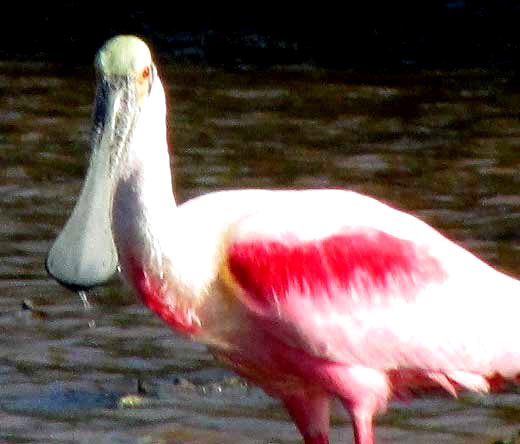
In both of those pictures water is dribbling from the beak's tip. That's because as our bird waded through the water he constantly swung his submerged bill back and forth in a sideways motion. When a spoonbill feels something like a shrimp in the water passing through the open bill, the beak is clapped closed, pulled from the water, and the prey is swallowed. Below, you can see a Roseate Spoonbill feeding with his beak cracked open:
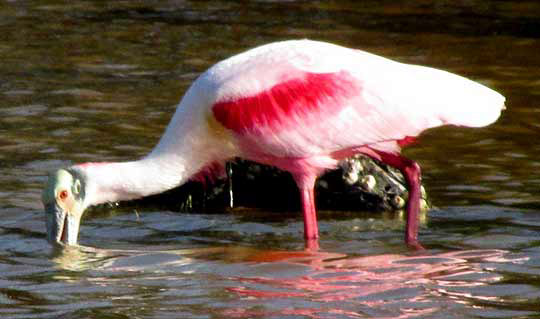
Back in the 1930s it was fashion among women to have fans made of spoonbill feathers, so untold numbers of spoonbills were killed. At one time a previously large breeding population in Florida was reduced to 30-40 pairs. However, when spoonbills finally gained legal protection their numbers began to rebound. Nowadays their habitat -- marshes and estuaries like those here -- are gradually disappearing, so once again the species is under pressure. Some populations show high levels of pesticide residue in their eggs but so far this doesn't appear to be causing a problem.
Roseate Spoonbills inhabit marshes, swamps, ponds and rivers from Florida across the Gulf of Mexico and Caribbean south to Argentina and Chile.
from the May 10, 2015 Newsletter issued from Río Lagartos, on the Yucatan Peninsula's northern coast (~N21.60°, ~W88.16°), Yucatán state, MÉXICO
SPOONBILL GATHERING PLACE
This winter the estuary's Rosette Spoonbills normally showed up alone or in groups of two or three. Lately, however, numerous spoonbills sometimes have been gathering on a small island near the flamingo breeding grounds, as shown below:
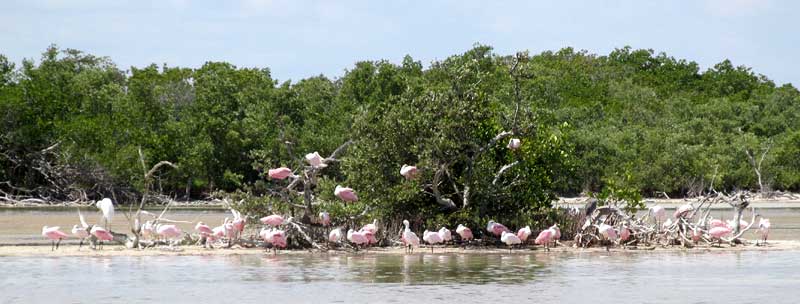
Below, you can see a close-up of one part of that island:
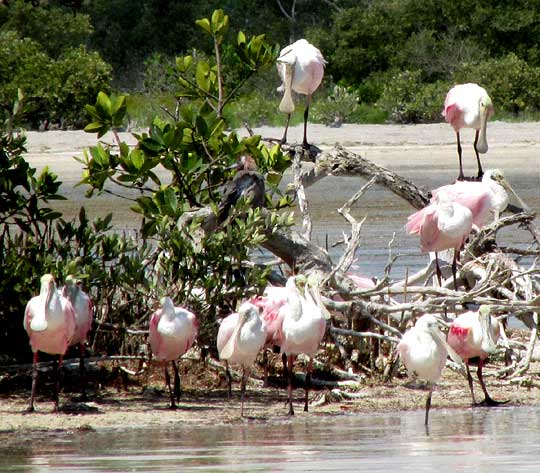
Is this a spoonbill rookery? TheFreeDictionary.Com gives two definitions of a rookery: First, it's a place where large numbers of rooks or certain seabirds or marine animals, such as penguins or seals, nest or breed, and, second; it's a colony of such animals.
These spoonbills are not nesting or breeding on the little island or nearby, and the ephemeral nature of their gathering doesn't strike me as permanent enough for them to constitute a colony, so my guess is that this little gathering of spoonbills is just that, a spontaneous gathering, and nothing else.